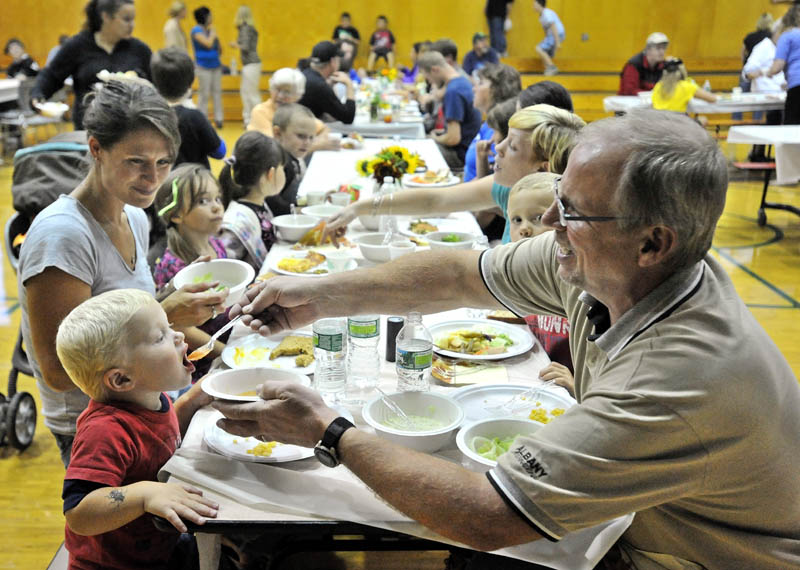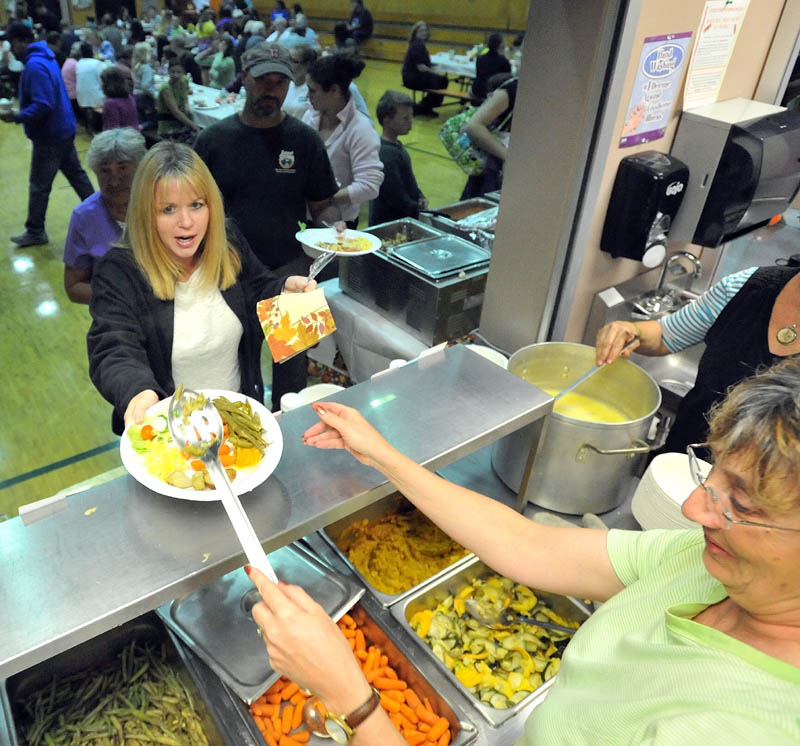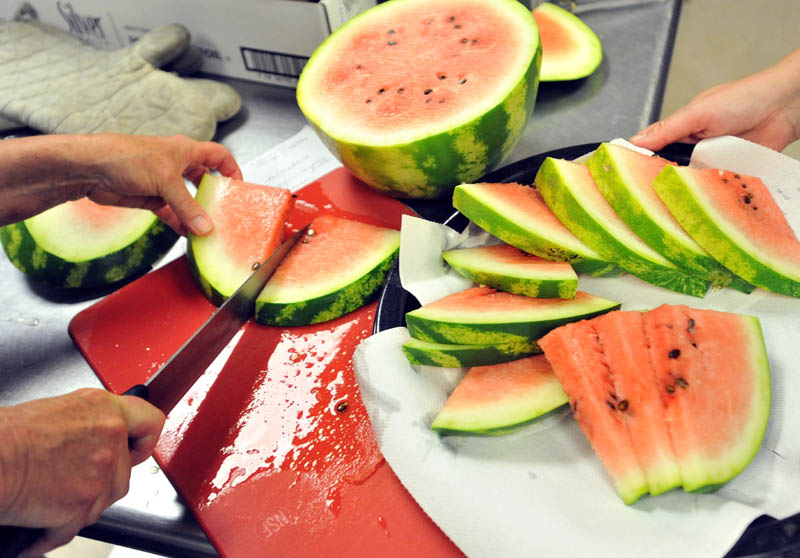ANSON — Parents and children sat down to a harvest dinner on a recent night to enjoy food prepared from the first crop of a new garden cultivated by third-graders.
There were carrots, greenbeans, homemade pickles as well as apple and blackberry pies and watermelon for dessert.
The Garrett Schenck Elementary School, like many schools across the nation, is making it a priority to teach students where food comes from and encourage healthy eating. In Somerset County, it is one of four schools to start working with FoodCorps, a national nonprofit whose mission is to teach nutrition, build school gardens and provide high-need schools with local food.
The organization, which started its work in the county last month, is a division of volunteer organization AmeriCorps. It is about two years old and has 80 service members across the country. Ten of those are in Maine.
Laurie Magee is the Somerset County service member. A petite woman with tanned skin and wavy dark hair, she had a private garden in Anson and was a Cooperative Extension Master Gardener volunteer before getting involved with FoodCorps.
“We are trying to do a lot of outreach in Maine,” she said. “There is a high low-income population in the state. There have been problems with obesity and problems getting kids to learn in the classroom. It’s true that when children eat better they learn better.”
The cafeteria at the harvest dinner is indicative of the type of learning environment healthy homegrown food could bring. The line for the buffet-style dinner wraps around two corners of the room, yet there is a calm that descends on the tables. A quiet kindergartener focuses on picking the individual seeds out of a triangle of watermelon with a plastic fork and keeping them from flying off his plate.
“Even though we live in the countryside, most of these kids don’t have experience with farms,” said Ken Coville, superintendent of the Anson school district, where Garrett Schenck is located, and director of food services. “Part of this project is getting them to try new things.”
The Greater Somerset County Public Health Collaborative used grant money from the New Balance Foundation here to bring a representative from FoodCorps to the area.
“It’s part of a bigger effort in Somerset County to promote school and community gardens,” said project director Bill Primmerman. “Gardens are hands-on learning projects that work into so many subjects in school.”
The collaborative is also working on a curriculum and teacher training session for schools to come to if they are interested in starting or upkeeping gardens.
Coville said that one of the challenges for school gardens in Maine is the prolonged winters.
“Storage is a problem,” he said. “but we do purchase a lot of food from local farmers. I think approaching Backyard Farms and maybe starting our own hydroponic garden can help us get through the winter.”
It is a similar approach to what is being done at the Forest Hills Consolidated School in Jackman, a K-12 school with 163 students. Forest Hills and Garrett Schenck are two of the four schools in Somerset County where FoodCorps volunteers started in August.
The school has a one-year-old greenhouse that it also built with grant money and a goal of one day having a self-sufficient cafeteria that runs off the produce they grow themselves in conjunction with local farmers.
“We’re a school, not a farm,” said Principal Denise Plante. “Getting fresh food here is a problem. The closest farmers’ market is 70 miles away in Skowhegan. We can grow some of our own food but we would also like to expand the growing capacity of farmers in our community.”
Plante, who also worked for 20 years in California schools, realizes that there are challenges to keeping school gardens and that those challenges are perhaps more apparent in Maine than in other parts of the country.
“Schools are cyclical by nature. They are not in full capacity at the peak of the growing season, so it’s very important to have collaboration with the community or very commited school members because students and teachers aren’t here in the summer.”
She noted that is can be harder to grow crops in Jackman, near the Canadian border in northern Somerset County, because it is about 10 degrees cooler and the growing season is about two weeks shorter than in Skowhegan.
It is also farther away from food service providers, so the cost of running a school cafeteria is higher. Plante said that one of the goals of the greenhouse, in addition to being an educational tool for students, is to help reduce the cost of food without raising energy costs.
Running the greenhouse in an energy-efficient manner has been a project of the high school environmental science classes.
“It’s good for kids to be exposed to this,” said Melissa Keller, 42, whose daughter Alyssa Parker is in third grade at Garrett Schenck. “They’re learning a variety of foods and also how to make food. I didn’t have that when I was young.”
Send questions/comments to the editors.






Success. Please wait for the page to reload. If the page does not reload within 5 seconds, please refresh the page.
Enter your email and password to access comments.
Hi, to comment on stories you must . This profile is in addition to your subscription and website login.
Already have a commenting profile? .
Invalid username/password.
Please check your email to confirm and complete your registration.
Only subscribers are eligible to post comments. Please subscribe or login first for digital access. Here’s why.
Use the form below to reset your password. When you've submitted your account email, we will send an email with a reset code.